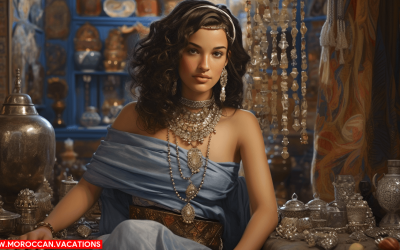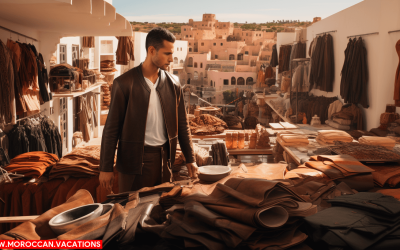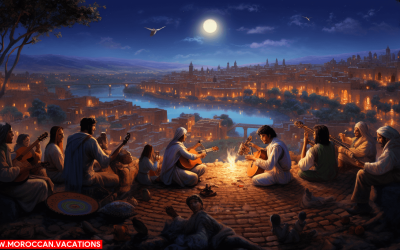The Origins of Traditional Music and Dance in Marrakesh
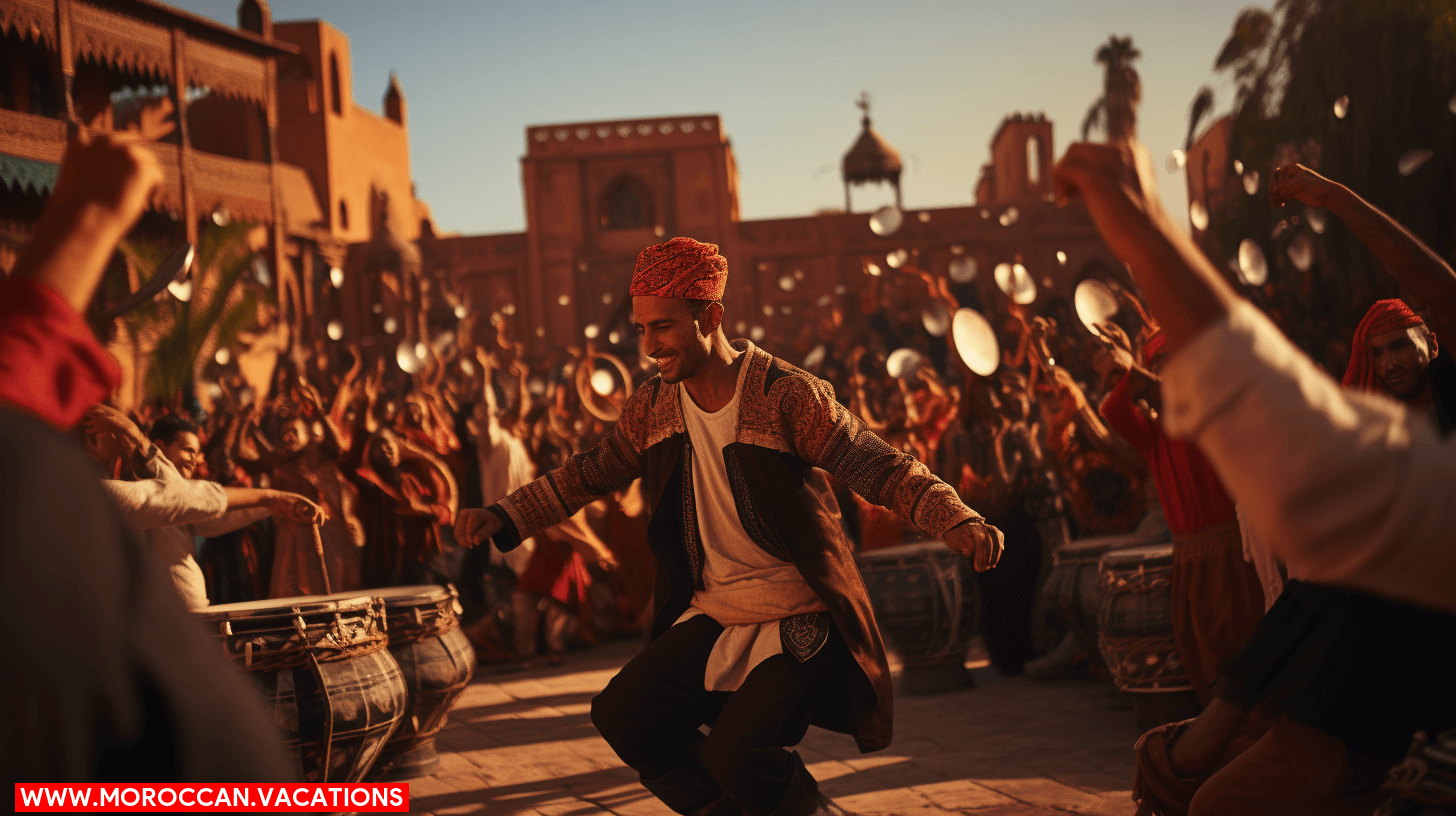

Imagine yourself transported to the vibrant streets of Marrakesh, where the air is filled with the intoxicating melodies and rhythmic beats of traditional music and dance. In this bustling city, the rich history of these performances unfolds before your eyes, captivating your senses and igniting a deep appreciation for the cultural heritage that has been passed down through generations. Join us as we delve into the fascinating world of Marrakesh’s traditional music and dance, and discover the beauty and freedom they bring.
You frequently hear the origins of traditional music and dance in Marrakesh discussed among locals and visitors alike. Marrakesh, with its rich history and diverse cultural influences, has played a significant role in shaping the traditional music and dance performances that are cherished today. The influences on traditional music in Marrakesh can be traced back to various civilizations that have left their mark on the city. From the indigenous Amazigh people to the Arab conquerors and the Andalusian refugees, each group has contributed unique musical traditions, instruments, and rhythms to the cultural tapestry of Marrakesh. These influences have blended together over time, resulting in a distinct sound that is both familiar and captivating.
Traditional dance in Marrakesh also holds immense cultural significance. It serves as a powerful expression of the city’s history, traditions, and values. The movements, costumes, and music of traditional dance performances offer a glimpse into the customs and beliefs of Marrakesh’s inhabitants. They often tell stories, convey emotions, and celebrate important events and milestones. Whether it is the rhythmic twirling of the Gnawa dancers or the intricate footwork of the Raqs Sharqi performers, traditional dance in Marrakesh is a living testament to the city’s vibrant cultural heritage.
Influences and Evolution of Traditional Performances
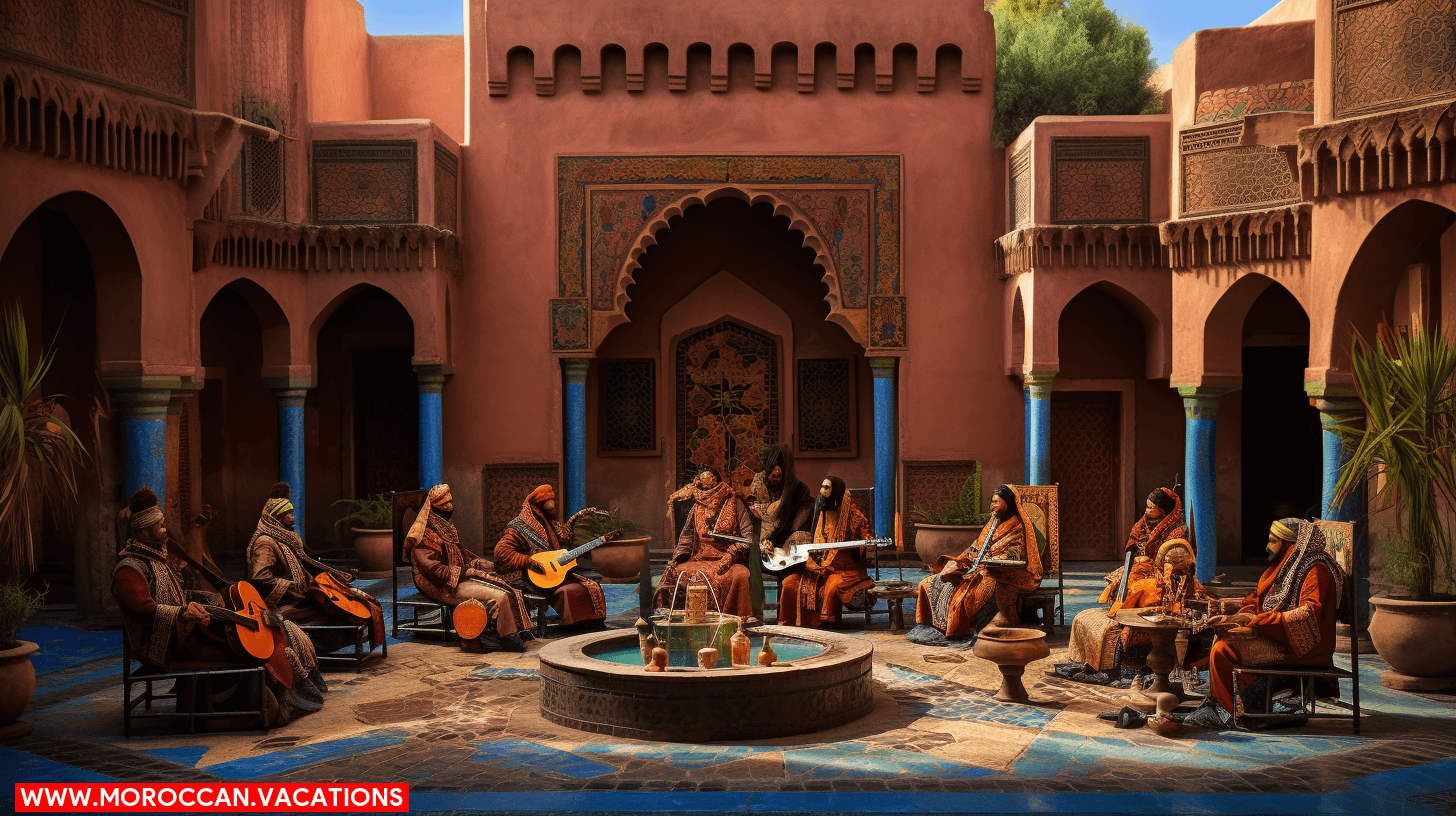

The influences and evolution of traditional performances in Marrakesh can be traced through the blending of diverse cultural traditions and the development of unique artistic expressions. Over the centuries, Marrakesh has been a melting pot of different cultures, resulting in a rich tapestry of influences on modern music and dance in the city.
- Cultural exchange: Marrakesh’s strategic location on trade routes facilitated the exchange of ideas and artistic practices between North Africa, the Middle East, and Europe. This cross-cultural exchange influenced the music and dance styles in Marrakesh, giving rise to a vibrant and dynamic performance tradition.
- Indigenous Berber culture: The indigenous Berber people have played a significant role in shaping the traditional performances in Marrakesh. Their music and dance forms, characterized by rhythmic drumming, energetic movements, and intricate footwork, have become an integral part of the cultural fabric of the city.
- Islamic influence: The advent of Islam brought new musical and dance traditions to Marrakesh. Islamic religious ceremonies and rituals introduced new rhythms, melodies, and choreography, which were incorporated into the traditional performances, adding depth and spiritual significance.
The cultural significance of traditional performances in Marrakesh cannot be overstated. These performances serve as a means of preserving and celebrating the city’s rich history and cultural heritage. They provide a platform for artistic expression, social cohesion, and a sense of identity for the people of Marrakesh. Moreover, these performances attract tourists from around the world, fostering cultural exchange and promoting the city as a vibrant cultural hub. The influences and evolution of traditional performances in Marrakesh are a testament to the city’s dynamic and diverse artistic traditions, reflecting its vibrant past and present.
The Role of Music and Dance in Moroccan Culture
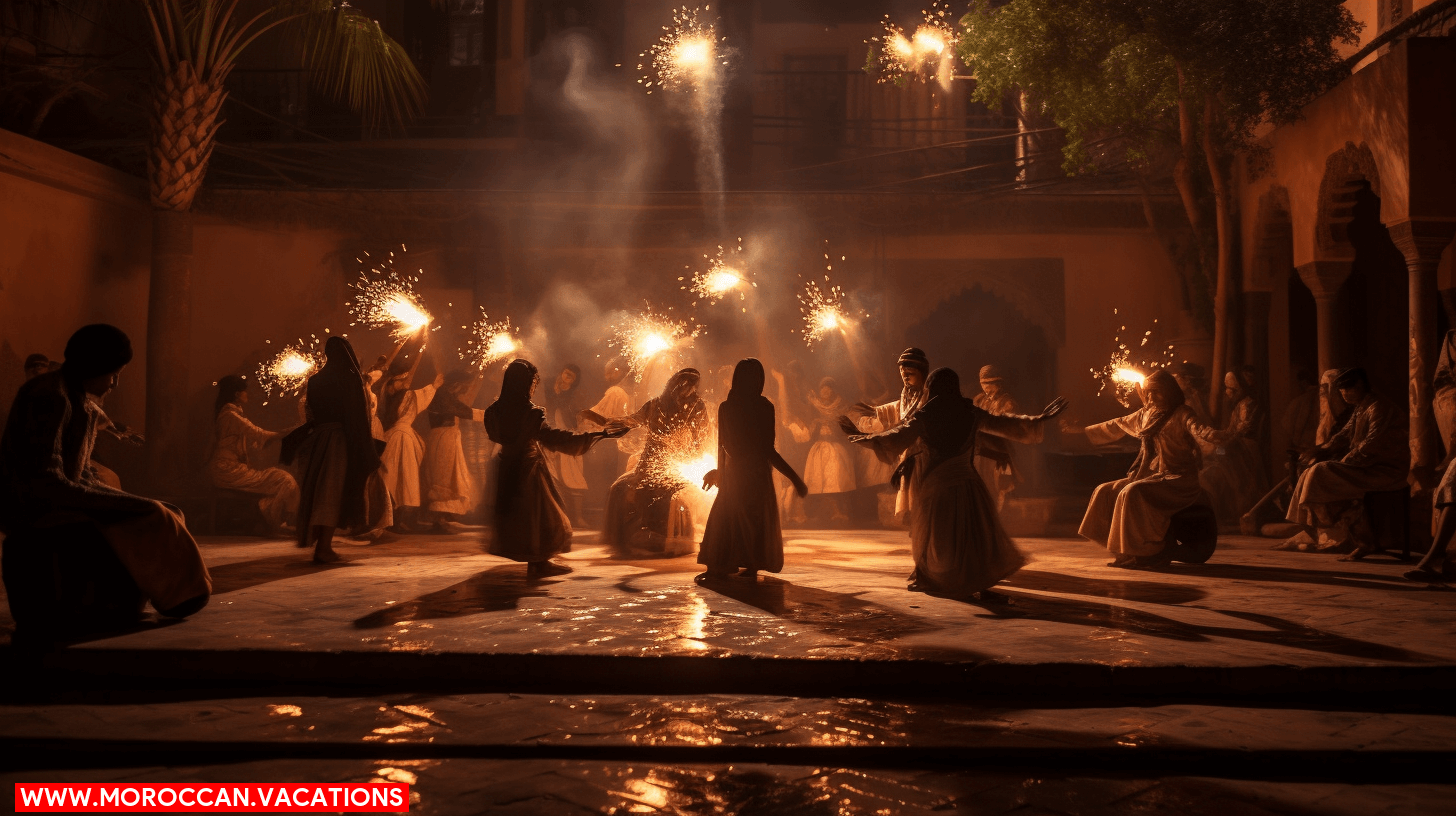

Music and dance play integral roles in Moroccan culture, reflecting the diverse influences and vibrant artistic traditions of Marrakesh. The influence of music on Moroccan cuisine is undeniable. Traditional music is often performed during meal times, enhancing the dining experience and creating a lively atmosphere. The rhythms and melodies of Moroccan music have also influenced the way food is prepared and enjoyed. For example, the use of spices and herbs in Moroccan cuisine is often accompanied by music that mirrors the flavors and aromas of the dishes.
In addition to its impact on cuisine, music and dance are deeply ingrained in Moroccan weddings. Traditional music and dance performances are an essential part of the wedding festivities, bringing joy and celebration to the occasion. The lively beats of the drums, the melodic sounds of the lute, and the graceful movements of the dancers create an enchanting ambiance that captivates both the wedding party and the guests.
Furthermore, music and dance serve as a means of cultural expression and preservation. They allow Moroccans to celebrate their heritage and share it with others. Through music and dance, the rich history and traditions of Moroccan culture are passed down from generation to generation, ensuring their longevity and relevance in the modern world.
Famous Traditional Music Instruments in Marrakesh
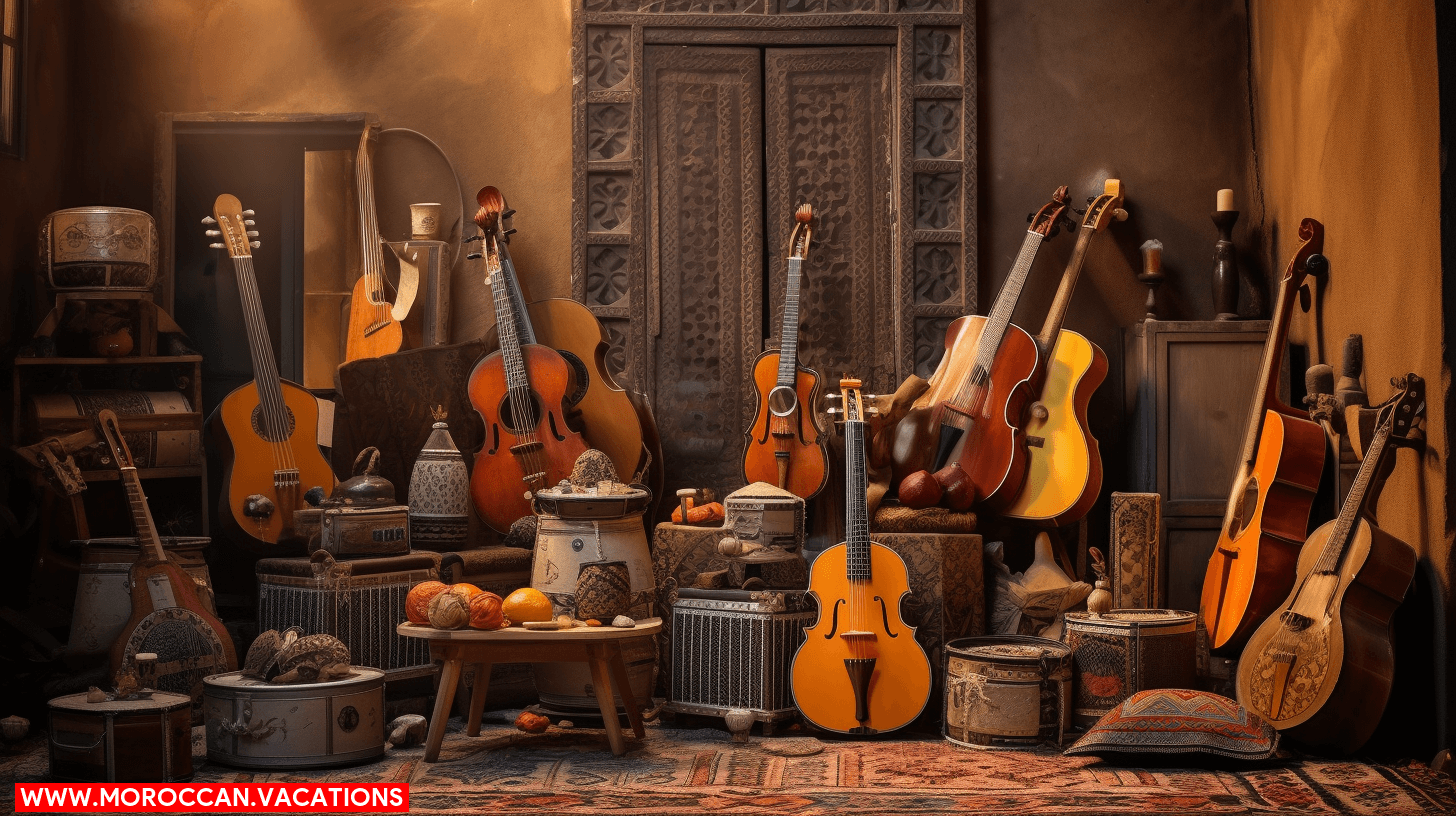

One of the most iconic traditional music instruments in Marrakesh is the oud. This ancient string instrument has been an integral part of Moroccan music for centuries. The oud is known for its pear-shaped body, short neck, and fretless fingerboard, which allow musicians to create a wide range of melodic and rhythmic patterns. The oud is often played with a pick or the fingertips, producing a unique and enchanting sound that captures the essence of Marrakesh’s rich musical heritage.
The cultural significance of music instruments in Marrakesh cannot be overstated. They not only serve as tools for artistic expression but also as symbols of tradition, identity, and community. Here are three other famous traditional music instruments in Marrakesh:
- The qanun: This string instrument is similar to a zither and is played by plucking the strings with small plectra. It is often used in ensembles to provide harmonic support and add depth to the music.
- The bendir: This traditional frame drum is made of wood and goatskin. It is played by striking the drumhead with the hand or a stick and is commonly used in Moroccan folk music and Sufi rituals.
- The nay: This ancient flute-like instrument has a distinct sound and is made from a hollow reed. It is played by blowing air into the instrument and manipulating the finger holes to produce different notes.
These famous traditional music instruments in Marrakesh play a vital role in preserving the rich musical heritage of the city and continue to captivate audiences with their unique sounds and cultural significance.
Traditional Dance Styles and Techniques in Marrakesh
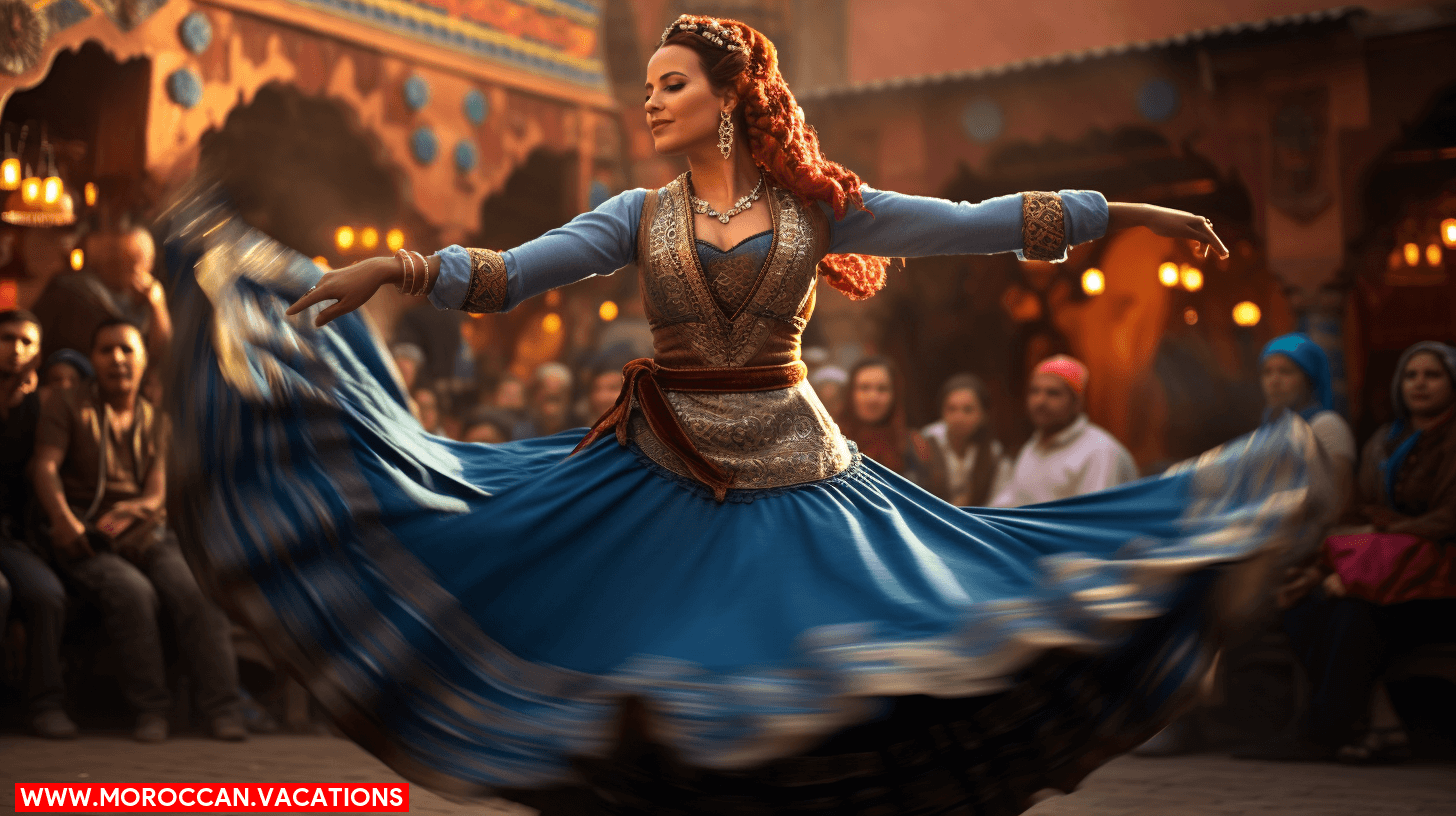

Explore the vibrant world of traditional dance style and techniques that complement the rich musical heritage of Marrakesh. In Marrakesh, dance holds immense cultural significance and plays a vital role in preserving the city’s rich traditions. The various dance styles in Marrakesh are deeply rooted in the region’s history, allowing locals and visitors alike to experience the pulsating rhythms and graceful movements that have been passed down through generations.
One of the most famous traditional dance styles in Marrakesh is the “Guedra,” a trance-like dance performed by women. This ancient dance form originated from the Saharan desert and is characterized by intricate hand movements, rhythmic footwork, and hypnotic chanting. The Guedra carries deep cultural significance, representing spirituality and healing rituals.
Another prominent dance style is the “Ahidous,” which is performed by men and women in a circle formation. This energetic dance showcases the strength and coordination of the dancers as they move in sync with the beat of traditional instruments. The Ahidous is not only a form of entertainment but also a way to celebrate communal unity and social cohesion.
The preservation of these traditional dance styles is crucial in safeguarding Marrakesh’s cultural heritage. Efforts are being made to ensure that the younger generation learns and appreciates these dance forms, leading to the establishment of dance academies and cultural festivals. Through these initiatives, Marrakesh continues to thrive as a hub of traditional dance, keeping its cultural traditions alive for generations to come. So, immerse yourself in the mesmerizing world of Marrakesh’s traditional dance styles and techniques, and witness the beauty and cultural richness they bring to this enchanting city.
The Significance of Traditional Music and Dance Festivals
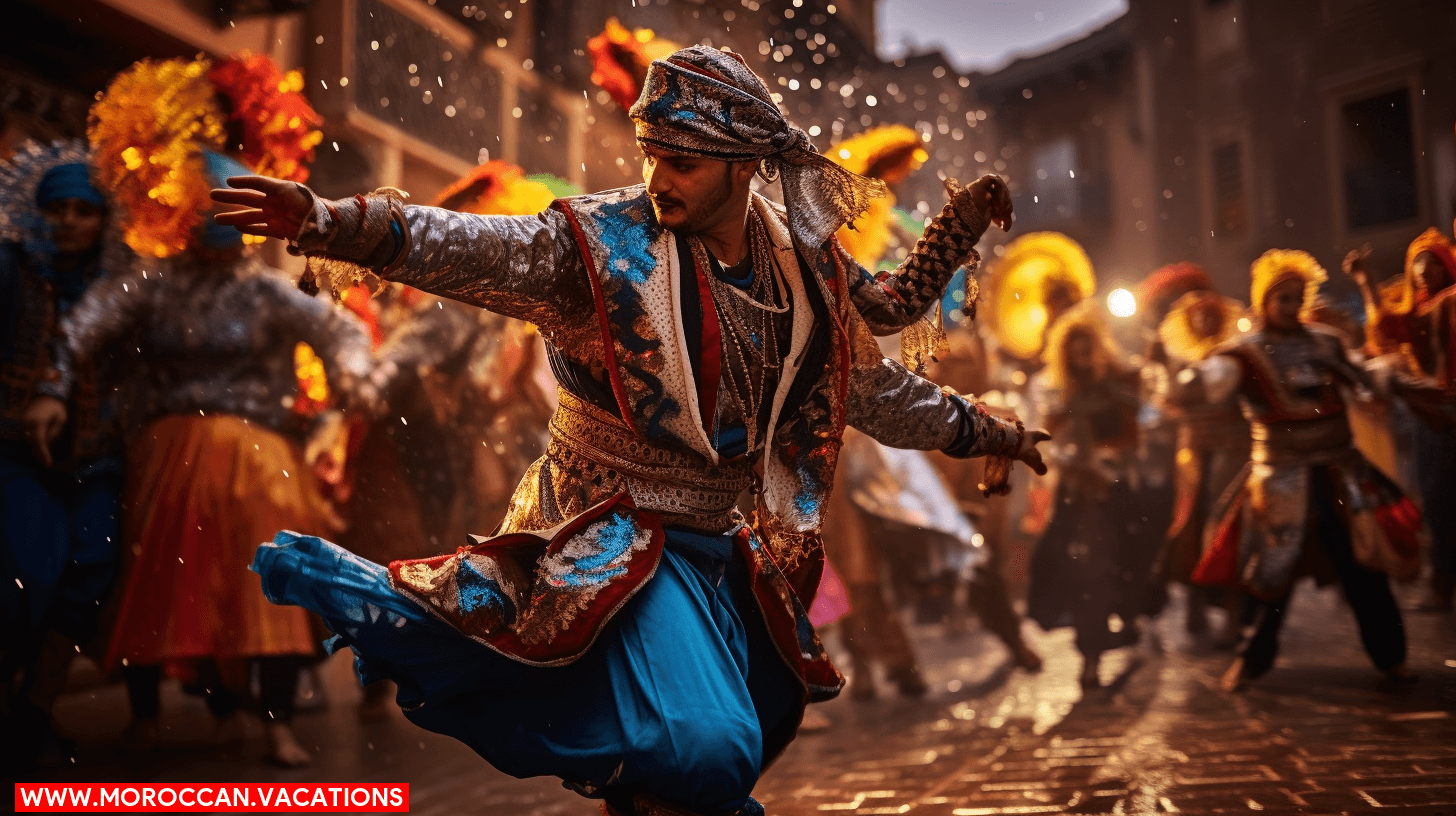

Immerse yourself in the vibrant atmosphere of traditional music and dance festivals, where the rich cultural heritage of Marrakesh comes alive. These festivals hold immense cultural significance, serving as a platform for artists to showcase their talents and preserve age-old traditions. The rhythmic beats of traditional music and the graceful movements of dance transport you to a bygone era, providing a glimpse into the city’s history and identity.
The cultural significance of these festivals cannot be overstated. They serve as a means of preserving and celebrating the cultural heritage of Marrakesh, ensuring that traditional music and dance forms are passed down from one generation to the next. These festivals also foster a sense of community and unity, bringing people from all walks of life together to appreciate and participate in the rich cultural tapestry of the city.
In addition to their cultural significance, these festivals also have a significant economic impact on Marrakesh. They attract tourists from all over the world, boosting the local economy through increased tourism revenue. Hotels, restaurants, and local businesses thrive during these festivals, creating employment opportunities and driving economic growth. Moreover, the festivals provide a platform for local artisans and craftsmen to showcase their products, contributing to the sustainability of traditional arts and crafts in the region.
Preserving and Promoting Traditional Performances in Modern Marrakesh
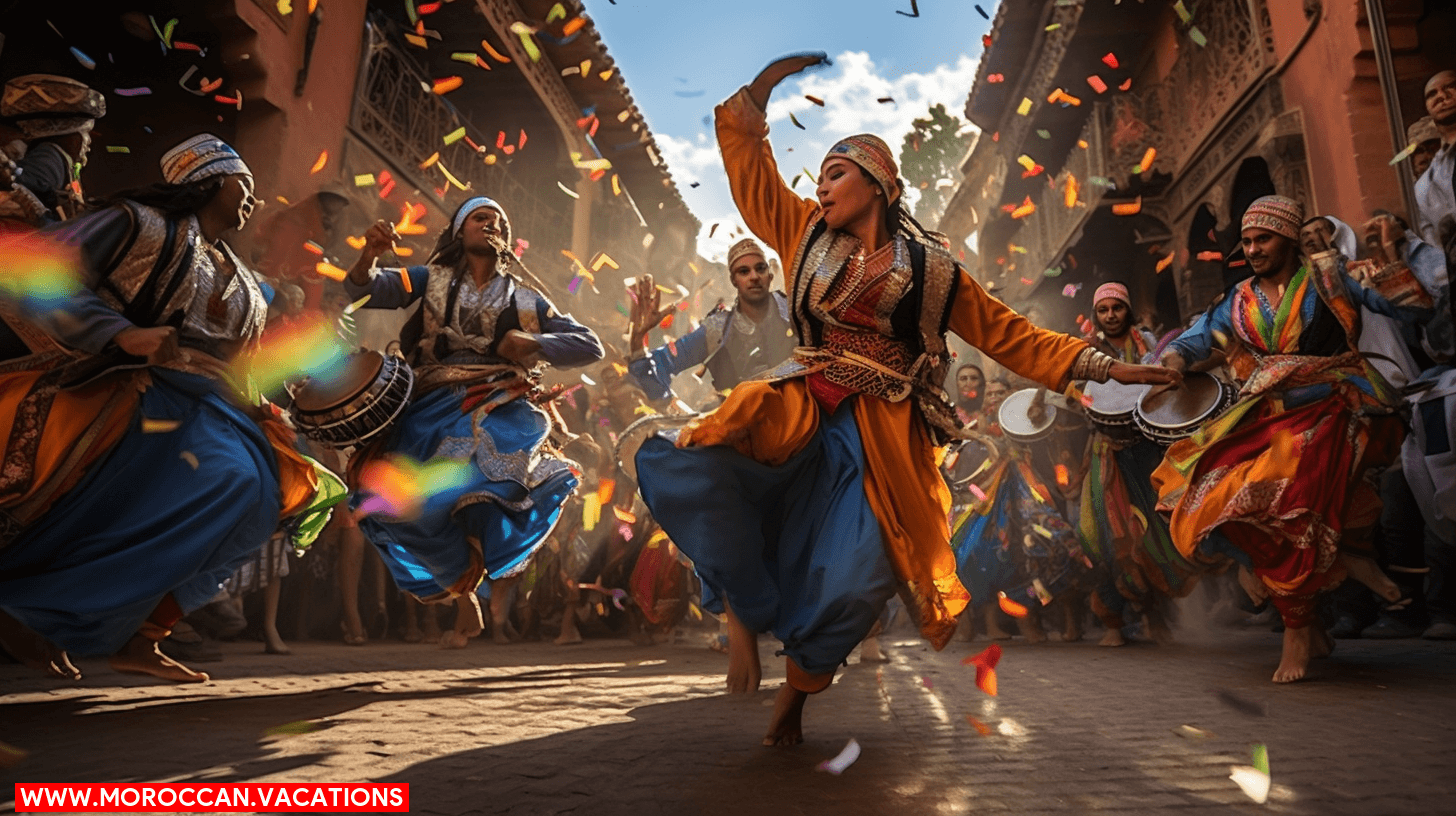

As you delve deeper into the rich history of traditional music and dance performances in Marrakesh, it becomes evident that preserving and promoting these cultural traditions in modern times is crucial for their continued existence. However, this endeavor is not without its challenges. One of the main preservation challenges faced by traditional performers in Marrakesh is the increasing influence of Western culture and globalization. With the rise of pop music and dance styles, traditional performances can easily be overshadowed and forgotten. Moreover, the younger generation may not be as interested in learning and practicing these traditional art forms, preferring instead to embrace more modern and popular forms of entertainment.
To address these preservation challenges, traditional performances in Marrakesh have undergone modern adaptations. Artists and performers have found innovative ways to incorporate elements of contemporary music and dance into their traditional performances, in order to attract a wider audience. This fusion of old and new elements not only helps to preserve the traditional art forms but also makes them more accessible and appealing to the younger generation.
In addition to modern adaptations, the promotion of traditional performances in Marrakesh has also been enhanced through various initiatives. Local organizations and cultural institutions have organized festivals and events dedicated to showcasing traditional music and dance. These platforms not only provide opportunities for traditional performers to showcase their talents but also help to create awareness and appreciation for these art forms among the general public.
Introducing Ayoub Karbachi, a brilliant wordsmith and curator of the Moroccan Vacations website. Prepare to immerse yourself in mesmerizing narratives and extraordinary moments, as he unveils the allure of Morocco's captivating destinations like never before.
Related Articles
A Fashionista’s Guide to Incorporating Traditional Moroccan Jewelry in Modern Style
Discover the perfect blend of tradition and modernity with our Fashionista’s Guide to Incorporating Traditional Moroccan Jewelry in Modern Style. Explore timeless pieces that effortlessly elevate your contemporary wardrobe. Uncover the secrets of merging cultural richness with fashion-forward flair. Elevate your style with the allure of Moroccan jewelry – where heritage meets haute couture.
From Tanneries to Luxury Boutiques: A Journey Through Morocco’s Leather Industry
Embark on a captivating journey through Morocco’s vibrant leather industry, from traditional tanneries to upscale boutiques. Explore the rich heritage and craftsmanship behind each piece, unveiling the essence of Moroccan culture and luxury.
A Guide to the Most Popular Moroccan Festivals and Dates
Discover the vibrant tapestry of Moroccan culture with our comprehensive guide to the most popular Moroccan festivals and their dates. From colorful celebrations to traditional rituals, immerse yourself in the rich heritage of Morocco’s diverse festivals.

